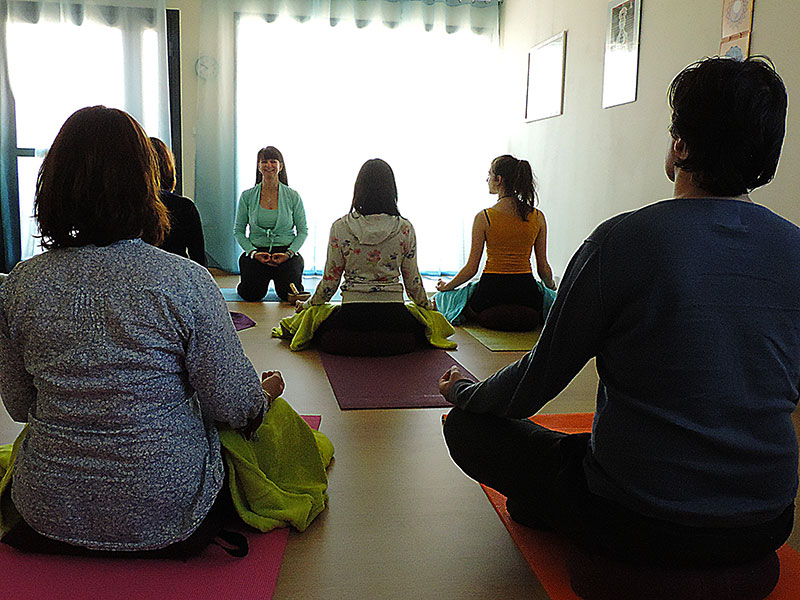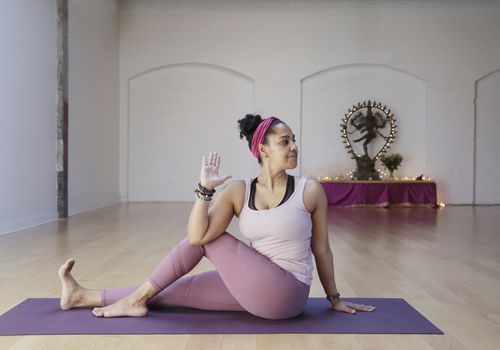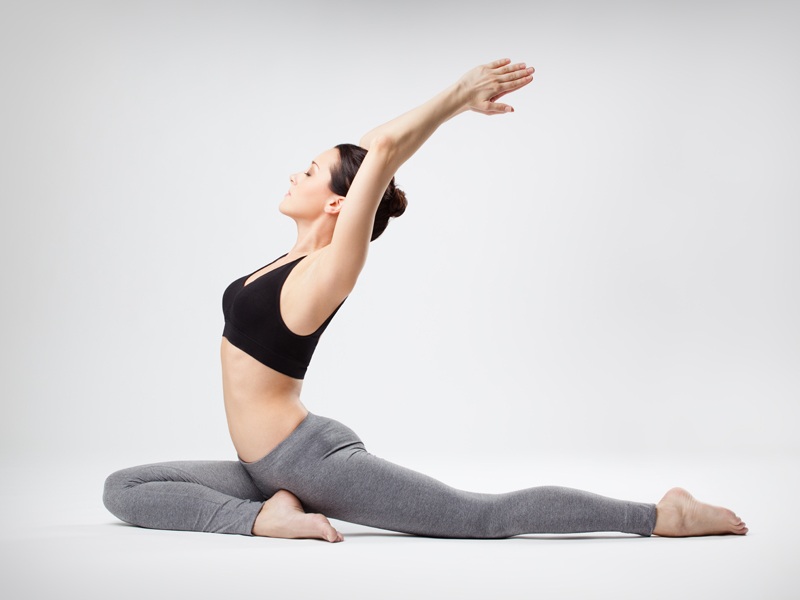
One of the many advantages of yoga is its ability to improve flexibility and strength. It can also help with stress reduction. Yoga can also improve your mental and physical health. Yoga improves your mood. These are just some of the many reasons you should try yoga, whether you are a beginner practitioner or a more experienced one. Here are some other benefits of yoga that you may not be aware of.
Enhances flexibility
Flexibility is one of the most important aspects in physical fitness. Many people focus on strength training and cardio, but flexibility is often overlooked. Stretching helps to improve range of motion and reduce stress on joints. Additionally, stretching helps release stress and mental tension. Stretching is a great way to relieve stress and reduce insomnia. These are just some reasons yoga is an excellent choice when it comes to physical fitness. Find out how you can enjoy the benefits of yoga.

Strengthens
If you are looking to add some yoga to your exercise routine, it will help build muscle and strength. Yoga can be used to supplement weight training, stretching, cardio, and other activities. It helps build strength and flexibility throughout your body. It promotes overall well being and anti-inflammatory benefits. Whether you're a beginner or a seasoned yoga practitioner, you'll find that this exercise will make you stronger, leaner, and more flexible.
Reduces stress
Yoga can be a great way to reduce stress. In order to calm the body and increase oxygen supply to the brain, it is taught to inhale deeply and exhale deeply. Yoga not only relaxes, but also improves problem-solving ability and lowers cortisol levels. Yoga practitioners must practice for at most 15 minutes per day to achieve these benefits. It is important to practice yoga for at least 15 minutes per day. Focusing on deep breathing will slow down your heartbeat and help you reap the benefits of yoga.
Mental health can be improved
Yoga can help with stress and anxiety. It can also help improve self-esteem. It is particularly helpful for women who have been through trauma and are seeking ways to improve mental health. In one study, the Justice Resource Institute Trauma Clinic recruited women who had experienced posttraumatic stress disorder (PTSD). Eight 75-minute Hatha Yoga sessions were then offered to them. They reported improvements in their symptoms of depression and anxiety.

Reduces chronic pain
Yoga has been shown to reduce chronic pain. HealthPartners Institute studied the effects of yoga on pain and fatigue. Additionally, yoga had a positive impact on patients' quality life. Even though it may not be appropriate for everyone, this type of exercise can help patients manage their chronic pain. An expert can help you determine whether yoga is right fit for you. Yoga is not a panacea for chronic pain. It's important that you consult your doctor before starting any exercise program.
FAQ
Do I have to be flexible to do yoga?
It all depends upon the type of yoga. Some yoga styles require you to be very flexible, while others focus on building muscle strength.
Different types of yoga call for different levels and degrees of flexibility. Beginners may need to only stretch their arms overhead. Intermediate practitioners will need to bend forward and touch the toes. Advanced practitioners might need to do deep twists or bends.
Who would benefit most from yoga?
The target market for yoga is people who want a better quality of life by improving their health and fitness levels. People who are looking to improve their balance, flexibility, and posture.
In addition, they may also want to lose weight or gain muscle mass. They may also be interested to reduce stress and anxiety, and achieve peace of mind.
Some disabilities are: arthritis, back issues, diabetes heart disease, high bloodpressure, insomnia, migraines and obesity. Yoga is especially helpful for those with disabilities.
Is yoga safe enough for everyone?
Yoga is safe for all ages, genders, ethnicities, and abilities. Yoga has been practiced for thousands upon thousands of years without side effects.
If you have any questions, consult your doctor before beginning a new exercise routine.
What happens if I stop doing yoga?
After a while, it's normal for people to lose interest in a particular activity. You may notice stiffer muscles if your yoga practice is discontinued. Poor posture, lack exercise, and simply ageing can cause stiffness.
Consider retaking some classes if you find the flexibility to be less than ideal. You should also ensure that you are following your daily schedule. Exercise strengthens your bones and muscles. So make sure to get enough sleep and eat well.
Do I need special equipment?
To practice yoga, you don't need to have any special equipment. However, some people may prefer specific props such a blanket, straps or blocks.
If you are interested in buying these items, please check out our Yoga Equipment Guide. We prefer to use natural materials instead of plastic.
Statistics
- Gentle yoga has been shown to ease some of the discomforts of tender, swollen joints for people with arthritis, according to a Johns Hopkins review of 11 recent studies. (hopkinsmedicine.org)
- A 2020 review of 27 studies (1,805 total participants) of yoga interventions in children or adolescents found reductions in anxiety or depression in 70 percent of the studies, with more promising results for anxiety. (nccih.nih.gov)
- According to the Agency for Healthcare Research and Quality, falls are incredibly common among older adults in nursing facilities. Even the simplest ones can increase the risk of death (24). (healthline.com)
- About one in seven U.S. adults practiced yoga in the past 12 months, according to a 2017 national survey. (nccih.nih.gov)
- The American Psychological Association recently shared that 84% of American adults feel the impact of prolonged stress (5). (healthline.com)
External Links
How To
Is yoga a good way to exercise?
Yoga isn’t just for those who want to lose weight. Yoga helps you to develop flexibility, balance coordination, strength and calmness.
Yoga isn’t just exercise. Instead, it’s an art form. The poses can be used to relax or meditate. They help us to improve our posture, concentration, and breathing.
Yoga is a practice of yoga. Yogis follow various forms of yoga, including Hatha, Ashtanga, Iyengar, Vinyasa, Bikram, Kundalini, Yin Yang, and Restorative.
Although there are many styles of yoga, they all share the same goals. Each type focuses differently on health and wellbeing. Yoga styles include Hatha, pranayama (meditation), and pranayama (pranayama).
There are some yoga movements that don't require equipment.
-
Sun Salutation – This sequence of 12 poses begins with a forward bend and is followed by 10 more.
-
Warrior Pose - While holding a stick or staff, a warrior pose is done.
-
Triangle Pose-This pose requires you to lift one leg behind you while bending at the knee.
-
Standing Forward Bend - This position involves bending forward from the waist and putting your legs straight on the floor.
-
Seated Twist- This pose is performed while sitting on a seat or mat.
-
Cobra Pose - This pose is performed lying flat on your back with arms overhead.
-
Child's Pose – This is the position where you lie face-up on the ground.
-
Cat/Cow Pose (Cat/Cow Pose) - This combination is similar to a cow or cat pose. As you lie face down, lift your upper body off of the ground. Then roll over onto your side and place your hands under your shoulders.
-
Head Tilt – This pose involves tilting your head back, while your eyes are closed.
-
Shoulder Stand: This is when you stand straight with your feet up and your arms extended above your head.
-
Tree Pose- You can achieve this pose by kneeling on one knee with your hands under you shoulders.
-
Bow Pose: This pose requires you to bend forward from the hips, and then place your palms on ground.
-
The corpse pose is held for five to ten minutes.
-
Mountain Pose: This pose is known as mountain pose, because it requires you to stand tall and keep your spine straight.
-
Legs up the Wall Pose: This pose requires that you hang upside-down on a wall.
-
Side Angle Pose – This is achieved by leaning against the wall and placing your right arm near the wall.
-
Plank Position - This position is achieved when you lie flat on your stomach and extend your left arm and right foot away from each other.
-
Bridge Pose – This is a pose where you balance on your elbows, and toes.
-
Reverse Table Top - This position is achieved by lying on the stomach and reaching your arms towards your ceiling.
-
Handstand - This requires strength and balance. This pose can be done by placing your hands between two walls, or using a door frame.
-
Half Moon Pose – Also known as Hero Pose, this pose is also called Hero Pose. It's performed by standing on both your hands and toes.
-
Headstand (or Handstand) - This pose requires excellent balance and strength. This pose is possible on a brick wall or on a doorframe.
-
Forearm Balance – This is a pose where your forearms rest on a tabletop.
-
Spinal Twist – This position is where you lie on your stomach while reaching for your arms.
-
Supported Boundangle pose - This position requires balance and support. For this pose, you will need to find something sturdy like a branch from a tree or an old beam to support you.
-
Wide Leg Forward - This position involves extending your legs and touching your toes.
-
Single Pigeon Pose-This pose is very similar to the wide leg forward folded, but only has one leg.
-
Extended Puppy Dog Poses are very relaxing. You can do this by extending your legs and bending your knees.
-
Standing Forward Bend - This is a pose where you are seated cross-legged, stretching your calves and hamstrings.
-
Crow Pose - This pose is difficult to do but very rewarding once you master it. To do it, raise your arms up above your head while lowering your arms to the floor.